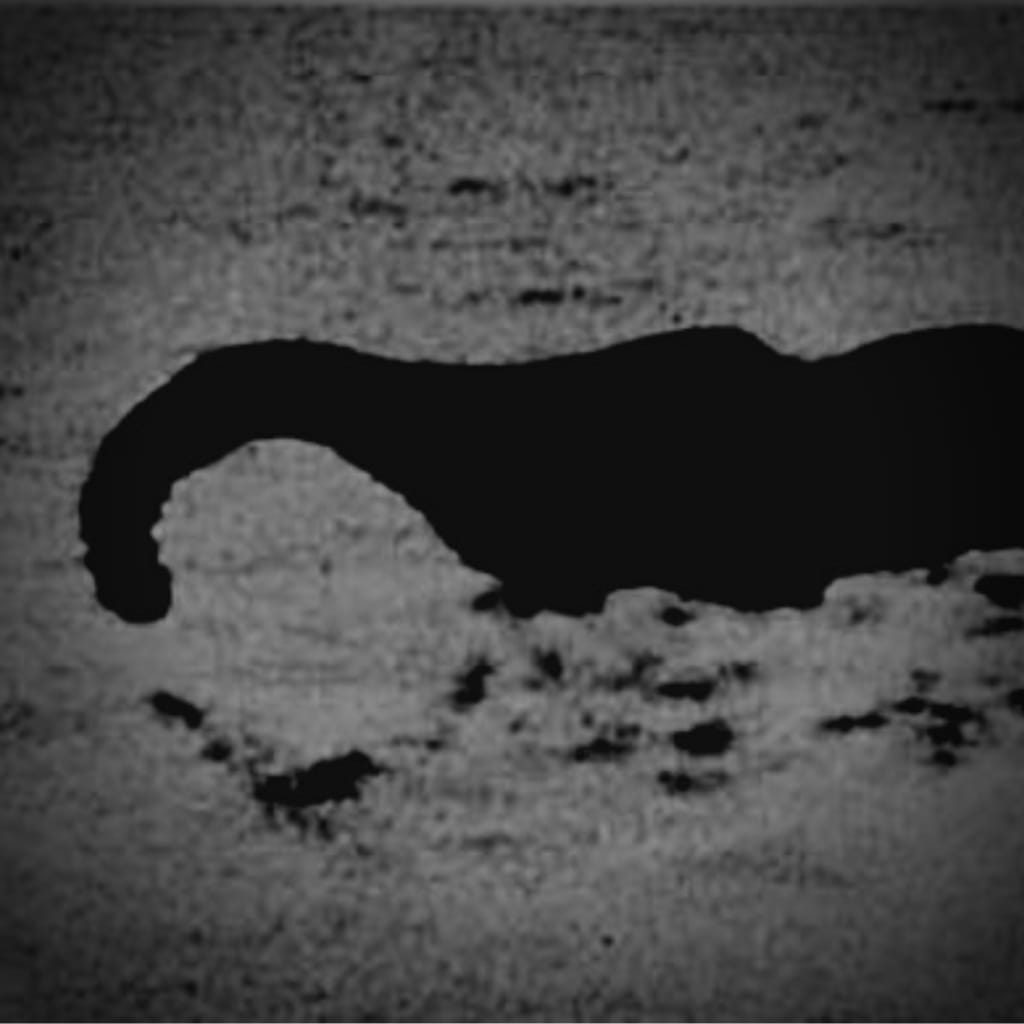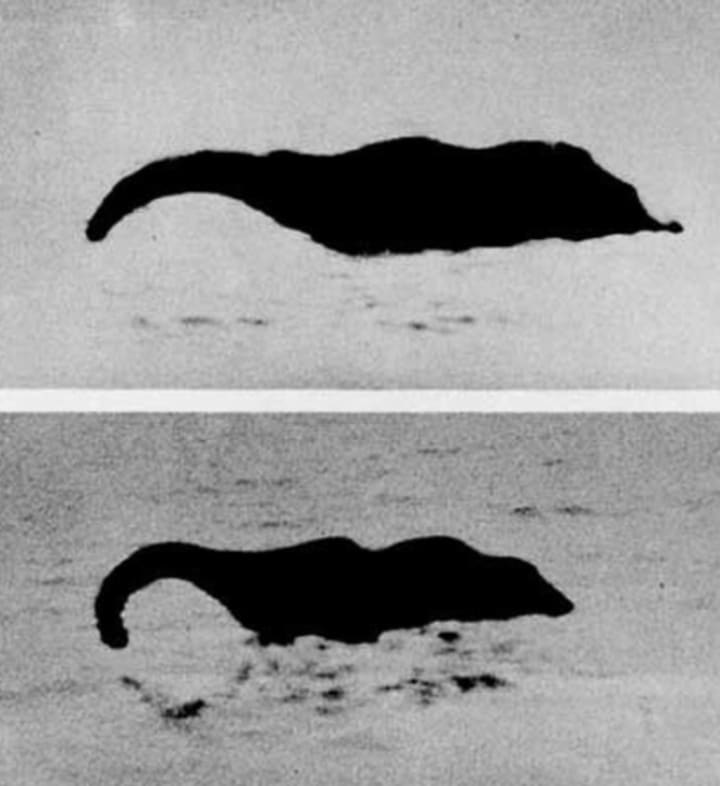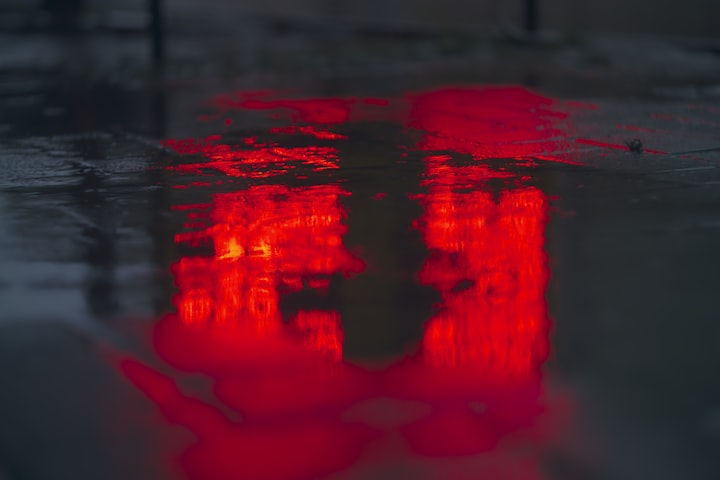Morgawr of Cornwall, England
A sea serpent off the coast of Cornwall, England.

I haven't mentioned this in a bit, but anyone who has been following me for a while knows that I maintain a massive list of ideas for things to write about. I'm always adding to it, and at the time of writing this, the list is over 1,000 items long. To choose what I write about, I use the old trusty method of generating a random number. Sometimes, themes come up, and occasionally, the randomizer happens to do something even more interesting, like Morgawr, a sea monster of Cornish folklore.
As you'll read about, Morgawr is from Cornwall, England—and there were only two things on my list from Cornwall. Morgawr, which I just rolled recently, and the Owlman of Mawnan, Cornwall, which I wrote about in October of 2022—both stories seem to originate from a man named Tony "Doc" Shiels, a stage magician. Some believe Shiels is a professional hoaxer, some believe his stories are 100% genuine, and others believe the truth lies somewhere in the middle.
Morgawr? Morgowr? Spelling & Pronunciation!
This one is a bit more complex than usual. The common spelling is "Morgawr"—a compound (word) in Welsh, meaning "sea giant." Because the spelling "Morgawr" is more common already in the English-speaking world, I'll be sticking with that.
However, we're talking about a creature from Cornish folklore off the coast of Cornwall. So, what is it in Cornish?
"Morgowr" is the Cornish word for the creature, which also translates to "sea giant." It's also a compound word, just like in Welsh.
mor = sea
kowr = giant
As far as how to pronounce it, I couldn't find a good Cornish or Welsh native recording, so the simplest way to remember it is to combine the English word "more" with "gower" (as in tower.) If you go searching around, you may also hear it pronounced as "more" + "gore"—but the ending, which sounds more like "tower," comes from the Cornish Language Partnership.
Geeking Out With Language
How did "kowr" become "gowr"?
There's a branch of linguistics called morphophonology (aka morphophonemics or morphonology). It studies the sound changes occurring in minimal meaningful units of languages. In some languages, like Japanese—and, apparently, Welsh and Cornish—"k" sounds can become "g" sounds in compound words. Now, I know next to nothing about Cornish and Welsh, but I do know of this language phenomenon in Japanese. It's called "sequential voicing" (連濁 or "rendaku") and has to do with the voicing of the initial consonant of a non-initial portion of a compound or prefixed word.
If you go deep into linguistics, you'll find that certain sequences of sounds require more effort to produce than others, which results in the sounds of compounds changing compared to their stems, like...
Japanese: te+kami=tegami (て + かみ → て-がみ)
Cornish: mor+kowr=morgowr
Try it out for yourself. The first syllable in both examples above leaves your mouth and tongue in a position that makes producing a hard G sound require less lingual effort than producing a hard K sound.
This whole thing falls under the umbrella of called Consonant Mutation and appears in all Celtic languages, including Cornish. (And, of course, the very non-Celtic language, Japanese.) Want to learn more? Check out more in...Irish!
Geeking Out With Language
How did "kowr" become "gowr"?
There's a branch of linguistics called morphophonology (aka morphophonemics or morphonology). It studies the sound changes occurring in minimal meaningful units of languages. In some languages, like Japanese—and, apparently, Welsh and Cornish—"k" sounds can become "g" sounds in compound words. Now, I know next to nothing about Cornish and Welsh, but I do know of this language phenomenon in Japanese. It's called "sequential voicing" (連濁 or "rendaku") and has to do with the voicing of the initial consonant of a non-initial portion of a compound or prefixed word.
If you go deep into linguistics, you'll find that certain sequences of sounds require more effort to produce than others, which results in the sounds of compounds changing compared to their stems, like...
Japanese: te+kami=tegami (て + かみ → て-がみ)
Cornish: mor+kowr=morgowr
Try it out for yourself. The first syllable in both examples above leaves your mouth and tongue in a position that makes producing a hard G sound require less lingual effort than producing a hard K sound.
This whole thing falls under the umbrella of called Consonant Mutation and appears in all Celtic languages, including Cornish. (And, of course, the very non-Celtic language, Japanese.) Want to learn more? Check out more in...Irish!
Location of Morgawr in Cornwall, England

About 4 miles (~6 kilometers) to the southwest is a place called Mawnan, where the story of the Owlman comes from. That's a small area for two different cryptids to live. I'll check and see what other odd creatures might be neighbors and add them to my list.
What is Morgawr?
Morgawr? That's a sea giant.
~Fin~
Wait, no, there's more to the story.
In 1975 off Pendennis Point in Falmouth, two locals spotted something strange in the sea that they described as "a hideous humped creature with a long bristled neck and stumpy horns." They said that it caught an eel and then disappeared below the water.

A few months later, some photos were printed in a newspaper, sent in by someone named "Mary F."

"The enclosed photos were taken by me about three weeks ago from Trefusis. They show one of the large sea creatures mentioned in your paper recently. I am glad to know that other people have seen the sea serpent. The pictures are not very clear because of the sun shining right into the camera and the haze on the water, also I took them very quickly indeed. The animal was only up for a few seconds. I would say it was about 15 to 18 ft long, I mean the part showing above the water.
It looked like an elephant waving its trunk, but the trunk was a long neck with a small head at the end, like a snake's head. It had humps on its back which moved in a funny way. The colour was black or very dark brown and the skin seemed to be like a sea lions my brother developed the film I didn't want to take it to the chemist perhaps you can make them clearer as a matter of fact the animal frightened me I would not like to see it and he closer I do not like the way it moved when swimming you can put these pictures in the paper a few like I don't want payment and I don't want any name in the paper about this I just think you should tell people about this animal what is it?
Yours sincerely Mary F, Falmouth."
LETTER DATED 29TH FEBRUARY, PUBLISHED – FALMOUTH PACKET, 5TH MARCH 1976
— Read more at The Cornish Bird Blog
The real identity of Mary F. has never been discovered.
Some speculate that Tony "Doc" Shiels himself invented both the legend and the name "Morgawr" and that he took the photos you saw above and sent them to the newspaper under the alias Mary F. There seem to be all sorts of stories about Morgawr, but they often overlap with stories of other sea monsters in the area, like that of Loch Ness or strange tales of unusual things spotted by crews of submarines during World War I. Unfortunately, it's difficult to untangle these because many of the supposed eyewitnesses were never verified or found.
In an interview with Fortean Times TV in 1997, Tony "Doc" Shiels said that he was "playing the fool" when he went to the sea to summon Morgawr and was stunned that it actually worked. He maintains that none of his photos were hoaxes, including Morgawr. To this day, no one has definitively proved anything—either for or against the hoaxing theories.
One of the more intriguing things about Morgawr compared to other sea monster sightings is that Morgawr is reported to be relatively innocuous and sometimes even just watches humans and boats. The sheer size, though, would intimidate most people, especially if they were out on a tiny fishing boat.
Where Is Morgawr Now?
Sightings supposedly started in the late 1800s and continued up until 2002, but I haven't been able to find a reported sighting after that, which means it's been two decades since the last sighting, which could mean a lot of things or just that Morgawr has migrated to other waters. No one seems to know where Morgawr is now, but if there is a new sighting, I'll be sure to post an update.
Going back to what I mentioned at the beginning of this, rolling both Owlman and Morgawr as topics to write about that close together was a little odd.
Coincidence?
What are the chances of that happening?
It's about one in a million.
(Someone, please check my probabilities, assuming 1/1000 and 1/999.)
You may be thinking it's entirely coincidental, or maybe even it's the ghost of Tony "Doc" Shiels who got into my computer and made those random numbers happen—except, as far as I can tell at the time of writing this, Tony "Doc" Shiels is still alive. So, no ghost there.
Maybe it was Morgawr.
Relevant & Related
- Watch Tony "Doc" Shiels himself in excerpts from a documentary about him.
- Don't miss reading The Owlman and Others by Jonathan Downes.
- There was a Cornish folk horror film released in 2022 called Enys Men. You can see the film trailer here: Enys Men Trailer.
- Read more about theories on Tony "Doc" Shiels monster hoaxing at Strangemag and more about a photo he took in 1977, now known widely as "The Loch Ness Muppet."
- Author Terry Brooks has a series of books, "Shannara," with one installment called Morgawr. If you're up for a long series, you'll be pleasantly surprised to find 45 works in the Shannara series.
- UK Black/Doom Metal band Morgawr released a single, "Morgawr."
- See even more Tony "Doc" Shiels talking about Morgawr in an old documentary from 1996.
- And check out Tony "Doc" Shiels trying to summon Morgawr in 1997 in Falmouth, Cornwall. I'm not entirely sure, but I think he was trying to look like a tasty, crunchy snack for the sea giant.
- There are so many sea monster things I could link to at this point as related; I'm not sure which ones to choose. There's simply an ocean full of possibilities. How about Tracking Tahoe Tessie Down, The Qalupalik of Inuit Folklore, and The Oklahoma Octopus?
- Fictional water monsters? How about Michael McDowell's Blackwater Series or Milicent Patrick & Her Enduring Design of the Creature from the Black Lagoon?
- Horror films featuring Cornwall? I got you covered. Here are a few: The Uninvited (1944) [trailer], The Plague of Zombies (1966) [trailer], and The Witches (1990) [10-minute preview featuring...Rowan Atkinson, aka...Mr. Bean. Come on. You can't not click on that. It's Mr. Bean. You know you want to.]
- Lastly, if you haven't already, be sure to check out my article about the Owlman of Mawnan, Cornwall.
~
Originally published in my weekly newsletter Into Horror History —every week, I explore the history and lore of horror, from influential creators to obscure events. Cryptids, ghosts, folklore, books, music, movies, strange phenomena, urban legends, psychology, and creepy mysteries.
About the Creator
J.A. Hernandez
J.A. Hernandez enjoys horror, playing with cats, and hiding indoors away from the sun. Also, books. So many books—you wouldn't believe.
He runs a weekly newsletter called Into Horror History and writes fiction.
https://www.jahernandez.com






Comments
There are no comments for this story
Be the first to respond and start the conversation.